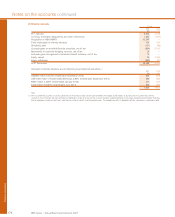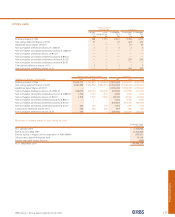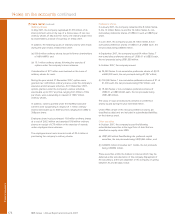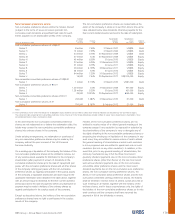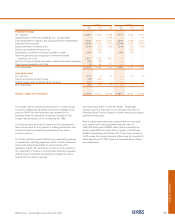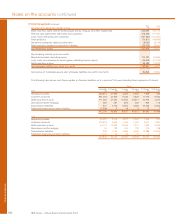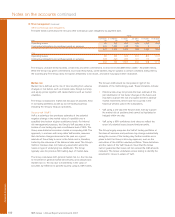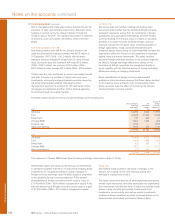RBS 2007 Annual Report Download - page 188
Download and view the complete annual report
Please find page 188 of the 2007 RBS annual report below. You can navigate through the pages in the report by either clicking on the pages listed below, or by using the keyword search tool below to find specific information within the annual report.
Financial statements
RBS Group • Annual Report and Accounts 2007
186
Notes on the accounts continued
•Mitigation techniques to reduce the potential for loss: credit
risk may be mitigated by the taking of financial or physical
security, the assignment of receivables or the use of credit
derivatives, guarantees, risk participations, credit insurance,
set off or netting.
•Risk systems and data quality: systems are well organised to
produce timely, accurate and complete inputs for risk
reporting and to administer key credit processes.
•Analysis and reporting: portfolio analysis and reporting are
used to ensure the identification of emerging concentration
risks and adverse movements in credit risk quality.
•Stress testing: stress testing forms an integral part of
portfolio analysis, providing a measure of potential
vulnerability to exceptional but plausible economic and
geopolitical events which assists management in the
identification of risk not otherwise apparent in more benign
circumstances. Stress testing informs risk appetite decisions.
•Portfolio management: active management of portfolio
concentrations as measured by risk reporting and stress
testing, where credit risk may be mitigated through
promoting asset sales, buying credit protection or curtailing
risk appetite for new transactions.
•Credit stewardship: customer transaction monitoring and
management is a continuous process, ensuring performance
is satisfactory and that documentation, security and
valuations are complete and up to date.
•Problem debt identification: policies and systems encourage
the early identification of problems and the employment of
specialised staff focused on collections and problem debt
management.
•Provisioning: independent assessment using best practice
models for collective and latent loss. Professional evaluation
is applied to individual cases, to ensure that such losses are
comprehensively identified and adequately provided for.
•Recovery: maximising the return to the Group through the
recovery process.
Credit risk models
Credit risk models are used throughout the Group to support
the analytical elements of the credit risk management
framework, in particular the risk assessment part of the credit
approval process, ongoing monitoring as well as portfolio
analysis and reporting. Credit risk models used by the Group
can be broadly grouped into three categories.
•Probability of default (“PD”): the likelihood that a customer
will fail to make full and timely repayment of credit
obligations over a one year time horizon. Customers are
assigned an internal credit grade which corresponds to
probability of default. Every customer credit grade across all
grading scales in the Group can be mapped to a Group
level credit grade (see page 74).
•Exposure at default (“EAD”): such models estimate the
expected level of utilisation of a credit facility at the time of
a borrower’s default. The EAD is typically higher than the
current utilisation (e.g. in the case where further drawings
are made on a revolving credit facility prior to default) but
will not typically exceed the total facility limit.
•Loss given default (“LGD”): models estimate the economic
loss that may occur in the event of default, being the debt
that cannot be recovered. The Group’s LGD models take into
account the type of borrower, facility and any risk mitigation
such as security or collateral held.
Loan impairment
The Group classifies impaired assets as either Risk Elements
in Lending (REIL) or Potential Problem Loans (PPL). REIL
represents non-accrual loans, loans that are accruing but
are past due 90 days and restructured loans. PPL represents
impaired assets which are not included in REIL but where
information about possible credit problems cause management
to have serious doubts about the future ability of the borrower
to comply with loan repayment terms.
Both REIL and PPL are reported gross of the value of any
security held, which could reduce the eventual loss should it
occur, and gross of any provision marked. Therefore impaired
assets which are highly collateralised, such as mortgages, will
have a low coverage ratio of provisions held against reported
impaired balance.
31 Risk management (continued)


